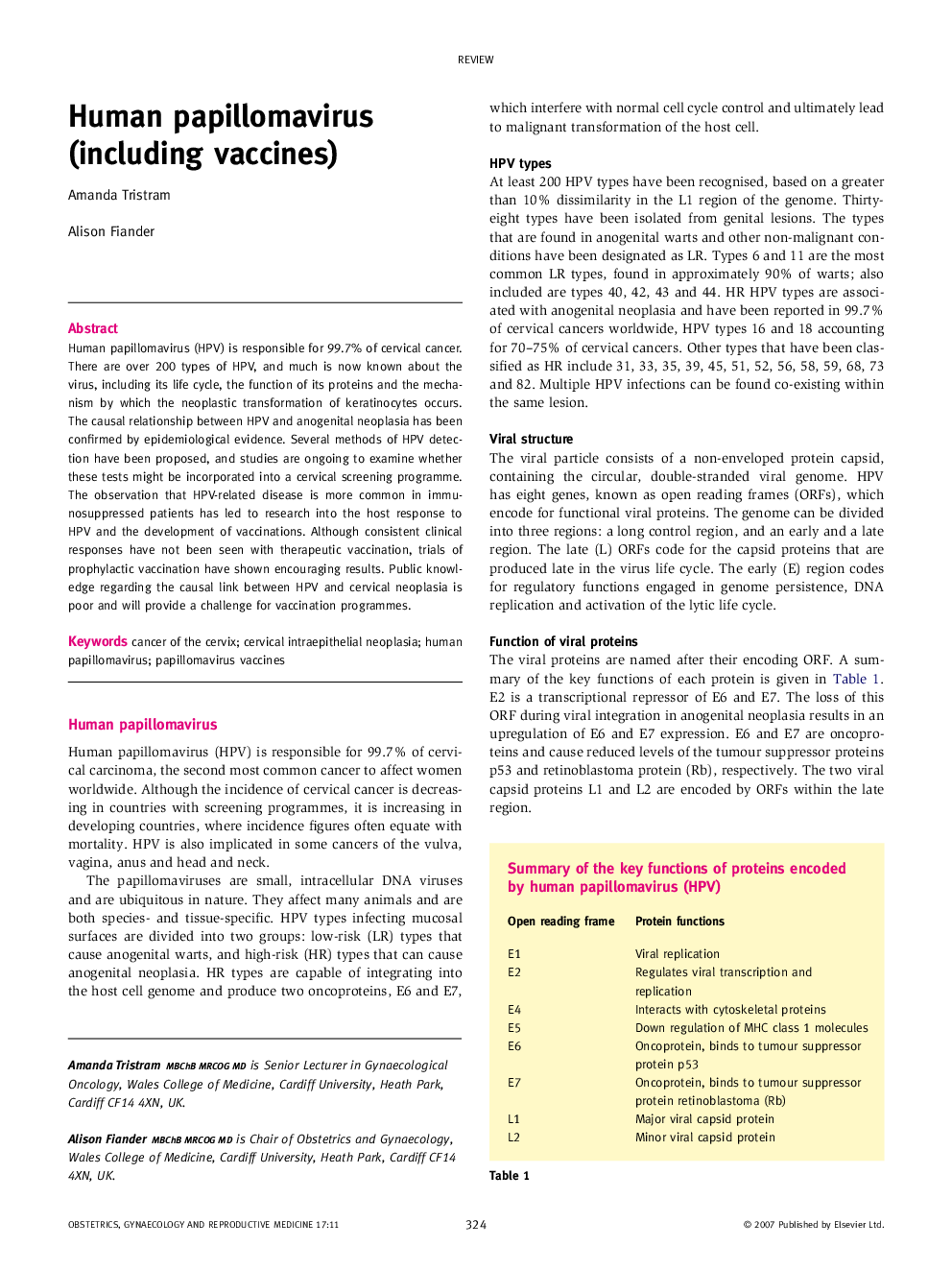| Article ID | Journal | Published Year | Pages | File Type |
|---|---|---|---|---|
| 3967289 | Obstetrics, Gynaecology & Reproductive Medicine | 2007 | 6 Pages |
Human papillomavirus (HPV) is responsible for 99.7% of cervical cancer. There are over 200 types of HPV, and much is now known about the virus, including its life cycle, the function of its proteins and the mechanism by which the neoplastic transformation of keratinocytes occurs. The causal relationship between HPV and anogenital neoplasia has been confirmed by epidemiological evidence. Several methods of HPV detection have been proposed, and studies are ongoing to examine whether these tests might be incorporated into a cervical screening programme. The observation that HPV-related disease is more common in immunosuppressed patients has led to research into the host response to HPV and the development of vaccinations. Although consistent clinical responses have not been seen with therapeutic vaccination, trials of prophylactic vaccination have shown encouraging results. Public knowledge regarding the causal link between HPV and cervical neoplasia is poor and will provide a challenge for vaccination programmes.
